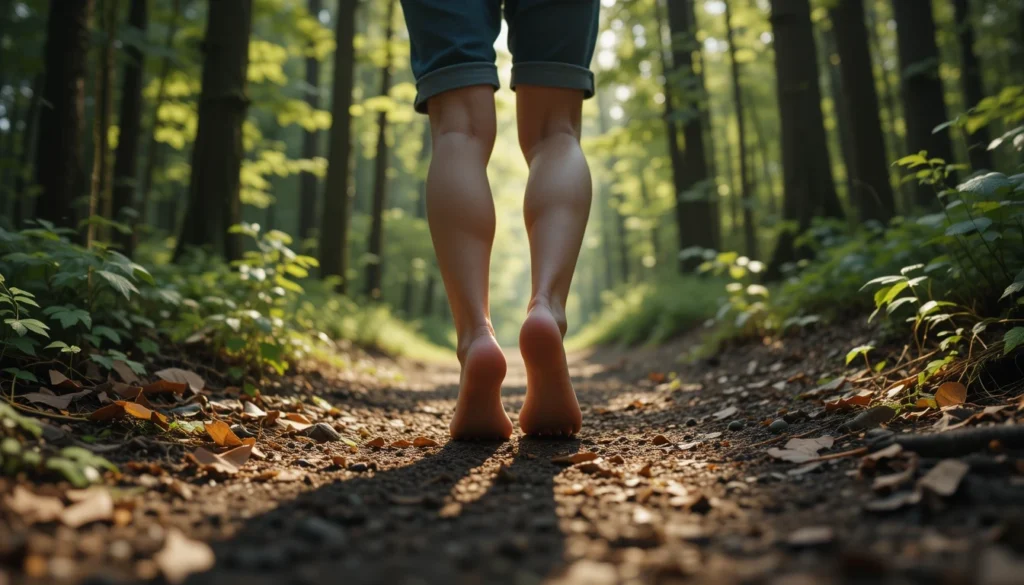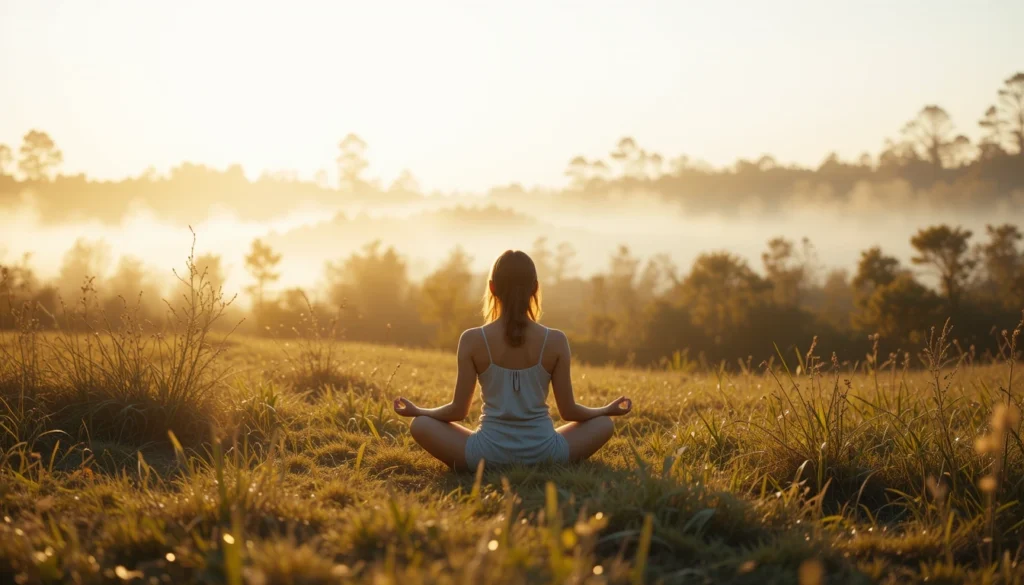What is mindfulness? Learn how this simple practice can transform your daily life, reduce stress, and improve emotional well-being with easy techniques anyone can try.
Introduction: Why Mindfulness Feels Like a Lifeline in a Busy World
Have you ever felt like your life is on autopilot—rushing through tasks, constantly scrolling, or reacting without thinking? If so, you’re not alone. In today’s hyper-connected, high-speed world, it’s easy to feel overwhelmed. That’s where mindfulness comes in. Mindfulness is not a trend—it’s a lifeline, helping us slow down and truly experience the richness of life. It offers an antidote to the chaos and a path back to ourselves.
What Is Mindfulness?
Mindfulness means paying full attention to the present moment with openness, curiosity, and kindness. It’s about noticing where you are, what you’re doing, and how you’re feeling—without distraction or judgment.
While it may sound simple, it’s a profound shift. Instead of being pulled in a thousand directions, mindfulness anchors you in the here and now.
“Mindfulness is the awareness that arises from paying attention, on purpose, in the present moment, non-judgmentally.” —Jon Kabat-Zinn
The Roots of Mindfulness
Although it has become popular in wellness circles today, mindfulness has deep roots that go back over 2,500 years, primarily within Buddhist philosophy. But its teachings have universal appeal. The modern secular form of mindfulness, developed by pioneers like Jon Kabat-Zinn through programs like Mindfulness-Based Stress Reduction (MBSR), is now used in therapy, education, business, and everyday life.
Mindfulness vs. Meditation: What’s the Difference?
Mindfulness is a way of being, while meditation is a practice that can cultivate it. You can be mindful while sipping tea, walking your dog, or brushing your teeth. Meditation, on the other hand, usually involves sitting quietly and focusing attention inward.
| Mindfulness | Meditation |
| State of awareness | Formal practice |
| Can be done anytime | Usually requires a quiet space |
| Involves full presence in daily activities | Involves focused attention on breath, sensations, or thoughts |
How Does Mindfulness Work?
1. Present Moment Awareness
Our minds often dwell on the past or race toward the future. Mindfulness gently calls us back to the now, allowing us to experience life more fully and vividly.
2. Non-Judgmental Observation
Rather than labeling thoughts or emotions as good or bad, mindfulness teaches us to observe them without judgment. This allows space between stimulus and response.
3. Compassionate Attention
Mindfulness isn’t just about awareness; it’s about how you pay attention. When you meet yourself with kindness, even your most difficult emotions become easier to face.
Benefits of Practicing Mindfulness
Mindfulness has powerful, research-backed benefits for the mind, body, and emotions. For a deeper dive into the Benefits of Mindfulness, check out our post on the Top 10 Benefits of Practicing Mindfulness Daily.
Mental Health
- Reduces anxiety and depression
- Helps break negative thought cycles
- Increases resilience and emotional regulation
Physical Health
- Lowers blood pressure
- Enhances sleep quality
- Boosts immune system function
Emotional Well-being
- Promotes self-awareness and empathy
- Fosters compassion toward self and others
- Builds stronger, more present relationships
| Category | Benefit |
| Mental Health | Less stress, more clarity |
| Physical Health | Better sleep, reduced pain |
| Emotional Health | Greater empathy and patience |
Ways to Practice Mindfulness
You don’t need to be a monk or book a retreat. Mindfulness can be woven into your everyday life. Here are some beginner-friendly methods:
1. Mindful Breathing
Simply sit quietly and focus on your breath for one minute. Notice the inhale and exhale. If your mind wanders, gently bring it back. This is mindfulness in action.
2. Body Scan
Lie down or sit comfortably. Slowly shift your attention through each part of your body, noticing any tension or sensation. This helps connect you to the present and reduces stress.
3. 5-4-3-2-1 Grounding Technique
A powerful way to ground yourself in the moment:
- 5 things you can see
- 4 things you can touch
- 3 things you can hear
- 2 things you can smell
- 1 thing you can taste
4. Mindful Walking
Turn your walk into a meditation. Feel each footstep. Notice the breeze, the sounds, and the textures around you.

5. Mindful Eating
Pause before a meal. Look at your food. Smell it. Take a bite slowly, noticing flavor and texture. Eating mindfully improves digestion and enjoyment.

Common Challenges (and How to Overcome Them)
| Challenge | Tip to Overcome |
| Restlessness | Start with short sessions, even 2 minutes |
| Racing thoughts | Let them pass like clouds in the sky |
| Skepticism or doubt | Results take time; consistency matters |
| Feeling bored | Try different techniques to keep it fresh |
Using Mindfulness in Daily Life
Mindfulness isn’t just something you “do” — it’s a way to live. Here are practical ways to integrate it into your day:
At Work
- Focus on one task at a time
- Take short mindful breaks to reset
- Breathe before replying to a stressful email
During Chores
- Wash dishes with full awareness
- Notice sensations during laundry or cleaning
- Turn repetitive tasks into mini-meditations
With Loved Ones
- Truly listen when someone speaks
- Make eye contact and be present
- Put your phone away during conversations
Tools & Resources to Deepen Your Practice
Recommended Apps
- Headspace: Great for beginners
- Calm: Offers guided meditations and sleep stories
- Insight Timer: Thousands of free meditations
Must-Read Books
- Wherever You Go, There You Are – Jon Kabat-Zinn
- The Miracle of Mindfulness – Thich Nhat Hanh
Creating a Routine
Start with just 5 minutes daily. Attach your mindfulness practice to an existing habit, like:
- After brushing teeth
- Before morning coffee
- At bedtime
Consistency is key to seeing long-term benefits.
FAQs About Mindfulness
Is mindfulness the same as meditation? Not exactly. Meditation is one tool to develop mindfulness, but mindfulness can be practiced any time.
Can I be mindful without meditating? Absolutely. Any activity done with full attention becomes an opportunity to practice mindfulness.
How long should I practice each day? Even 5–10 minutes can be powerful. Build from there.
Will it really help with anxiety? Yes. Mindfulness helps ground you, calm your nervous system, and bring awareness to unhelpful thought patterns.
What if I’m too busy? That’s exactly when you need it. Start small. Even mindful sips of tea or 3 deep breaths can shift your day.
Conclusion: Mindfulness is a Homecoming
Mindfulness is not about escaping reality or achieving some mystical state. It’s about returning—to yourself, to this moment, to life as it unfolds. You don’t need fancy tools, special clothes, or hours of free time. You just need a willingness to pause, breathe, and pay attention.
So start where you are. Use what you have. And take it one breath at a time.



